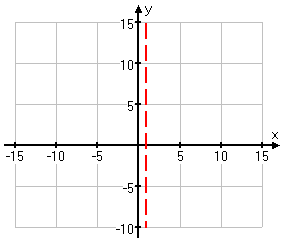The river wild ita. 3.5 - Rational Functions and Asymptotes 3.5 - Rational Functions and AsymptotesA rational function is a function thatcan be written as the ratio of twopolynomials where the denominatorisn't zero.f(x) = p(x) / q(x) DomainThe domain of a rational function is all real values except where the denominator, q(x) = 0. RootsThe roots, zeros, solutions, x-intercepts (whatever you want to call them) of the rational functionwill be the places where p(x) = 0. That is, completely ignore the denominator. Whatever makesthe numerator zero will be the roots of the rational function, just like they were the roots of thepolynomial function earlier.If you can write it in factored form, then you can tell whether it will cross or touch the x-axis ateach x-intercept by whether the multiplicity on the factor is odd or even. Vertical AsymptotesAn asymptote is a line that the curve approaches but does not cross. The equations of the verticalasymptotes can be found by finding the roots of q(x).
Rational Functions And Asymptotes Key
Completely ignore the numerator whenlooking for vertical asymptotes, only the denominator matters.If you can write it in factored form, then you can tell whether the graph will be asymptotic in thesame direction or in different directions by whether the multiplicity is even or odd.Asymptotic in the same direction means that the curve will go up or down on both the left andright sides of the vertical asymptote. Asymptotic in different directions means that the one sideof the curve will go down and the other side of the curve will go up at the vertical asymptote. Horizontal AsymptotesA horizontal line is an asymptote only to the far left and the far right ofthe graph. 'Far' left or'far' right is defined as anything past the vertical asymptotes or x-intercepts.Horizontal asymptotes are not asymptotic in the middle. It is okay to cross ahorizontal asymptote in themiddle.The location of the horizontal asymptote is determined by looking at the degrees of thenumerator (n) and denominator (m).
If nm, there is no horizontal asymptote. However, if n=m+1, there is an oblique or slantasymptote.HolesSometimes, a factor will appear in the numerator and in the denominator. Let's assume thefactor (x-k) is in the numerator and denominator. Because the factor is in the denominator, x=kwill not be in the domain of the function. This means that one of two things can happen.
Therewill either be a vertical asymptote at x=k, or there will be a hole at x=k.Let's look at what will happen in each of these cases. There are more (x-k) factors in the denominator. After dividing out all duplicate factors, the(x-k) is still in the denominator. Factors in the denominator result in vertical asymptotes.Therefore, there will be a vertical asymptote at x=k. There are more (x-k) factors in the numerator. After dividing out all the duplicate factors, the(x-k) is still in the numerator. Factors in the numerator result in x-intercepts.
Rational Functions Asymptotes Worksheet
But, becauseyou can't use x=k, there will be a hole in the graph on the x-axis. There are equal numbers of (x-k) factors in the numerator and denominator.
After dividingout all the factors (because there are equal amounts), there is no (x-k) left at all. Because thereis no (x-k) in the denominator, there is no vertical asymptote at x=k. Because there is no (x-k)in the numerator, there is no x-intercept at x=k. There is just a hole in the graph, someplaceother than on the x-axis. To find the exact location, plug in x=k into the reduced function(you can't plug it into the original, it's undefined, there), and see what y-value you get.Oblique AsymptotesWhen the degree of the numerator is exactly one more than the degree of the denominator, thegraph of the rational function will have an oblique asymptote.

Another name for an obliqueasymptote is a slant asymptote.To find the equation of the oblique asymptote, perform long division (synthetic if it will work) bydividing the denominator into the numerator. As x gets very large (this is the far left or far rightthat I was talking about), the remainder portion becomes very small, almost zero. So, to find theequation of the oblique asymptote, perform the long division and discard the remainder.